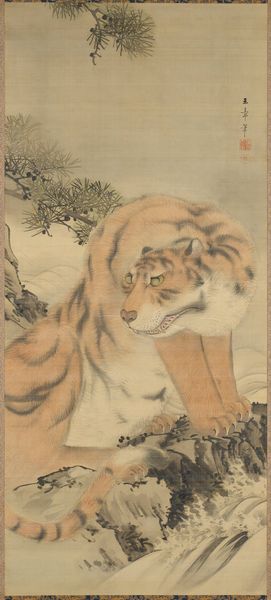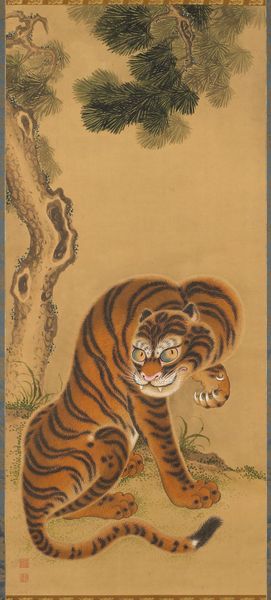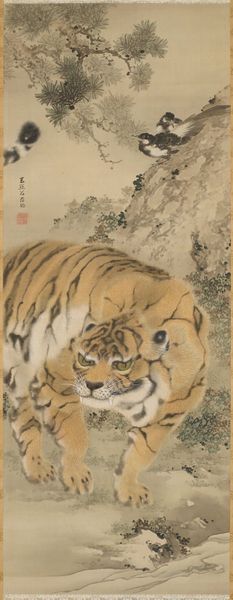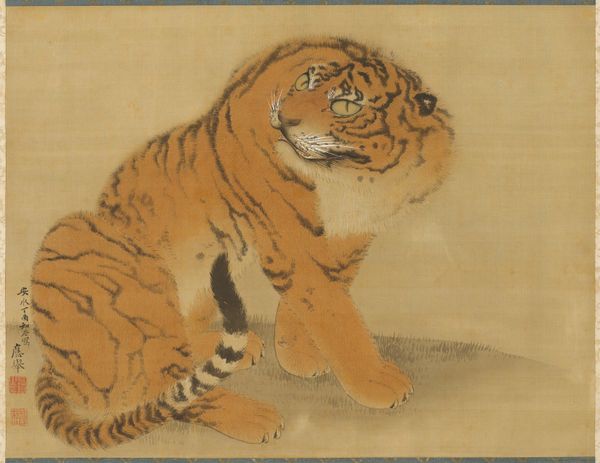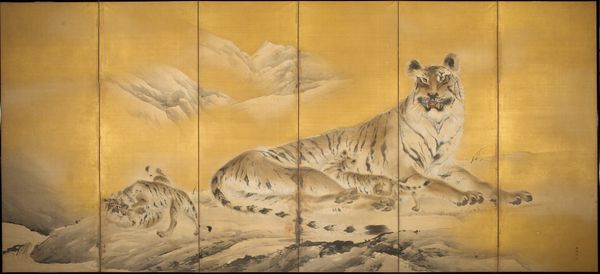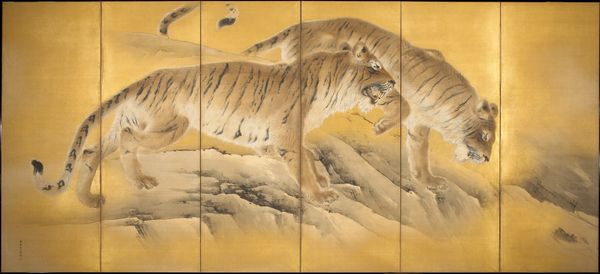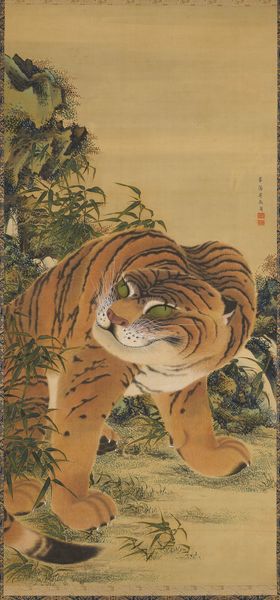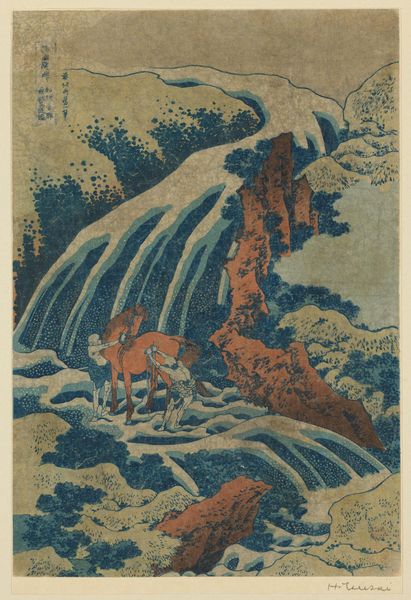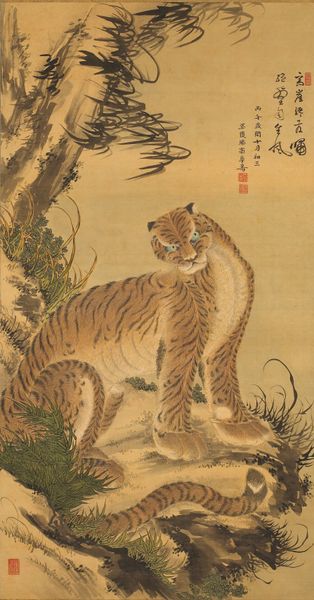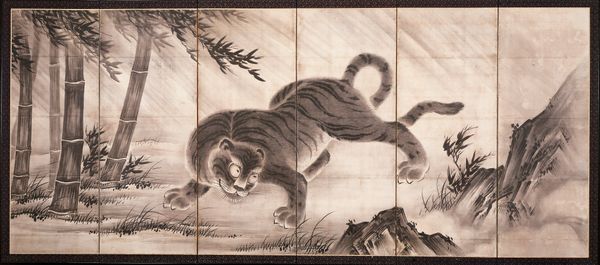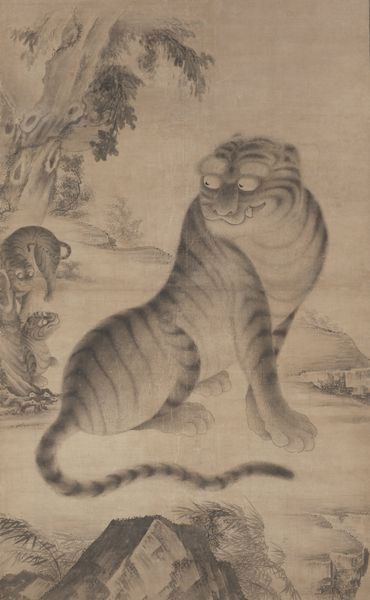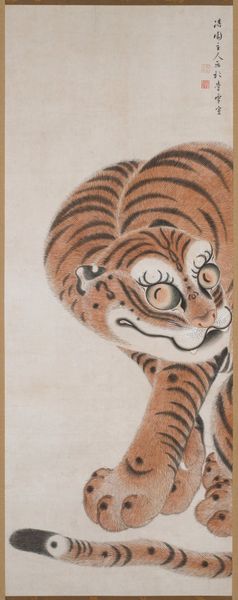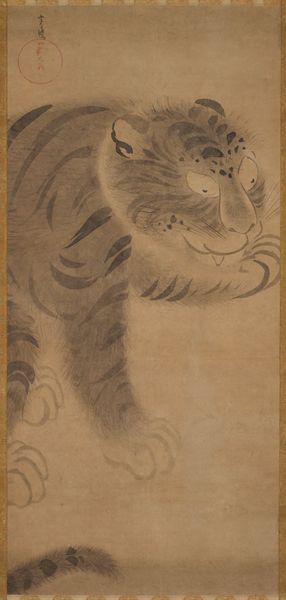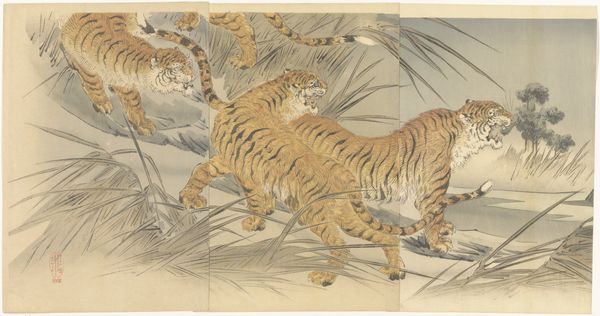
painting, hanging-scroll, ink
#
ink painting
#
animal
#
painting
#
asian-art
#
landscape
#
japan
#
hanging-scroll
#
ink
#
calligraphy
Dimensions: 42 3/4 x 17 5/16 in. (108.59 x 43.97 cm) (image)72 x 22 3/16 in. (182.88 x 56.36 cm) (overall, without roller)
Copyright: Public Domain
Curator: The work before us, "Tiger Crossing a Stream," thought to be in the style of Yamamoto Jakurin, dates from the late 18th century. It is executed using ink on a hanging scroll. Notice how the tiger is positioned within the frame. Editor: My first thought? Intense. The tiger’s gaze just grabs you. I feel like it’s about to pounce right out of the water and off the scroll! I am not sure that I am a fan of those intense yellow eyes. Curator: The materiality speaks volumes about artistic production in Edo period Japan. Ink, readily available, allowed for incredible detail. But consider too the labor involved in preparing the pigments and applying the ink so skillfully onto silk or paper. These were valuable commodities. Editor: Right. And think about the skill involved. It's not just about depicting a tiger, but about capturing its raw power, the sort of feeling that vibrates right through your fingertips. The ink gives it this ethereal, almost ghostly quality. As if the tiger isn't just crossing a stream, but moving between worlds. It looks like its nose is wet. I love it. Curator: Yes, and the social context cannot be ignored either. Tigers were often symbolic representations of power and courage, qualities admired by the ruling classes, perhaps intended to influence or to act as symbolic representation. Editor: Power, sure. But there's also a loneliness here, don’t you think? It looks both beautiful and savage, vulnerable and threatening. What a fascinating interplay of elements. Is he running toward something or away from it? I guess the real trick is it lets the viewer imagine whatever feels the truest. Curator: Indeed. The artist, or artists who influenced the work's aesthetic, used familiar materials but made this an incredibly nuanced object. We are forced to consider all aspects. Editor: Ultimately, it reminds me that art is about transformation, seeing something ordinary, like a tiger crossing a stream, and turning it into something that can rattle the soul. I will miss that crazy tiger and his dripping whiskers!
Comments
No comments
Be the first to comment and join the conversation on the ultimate creative platform.
